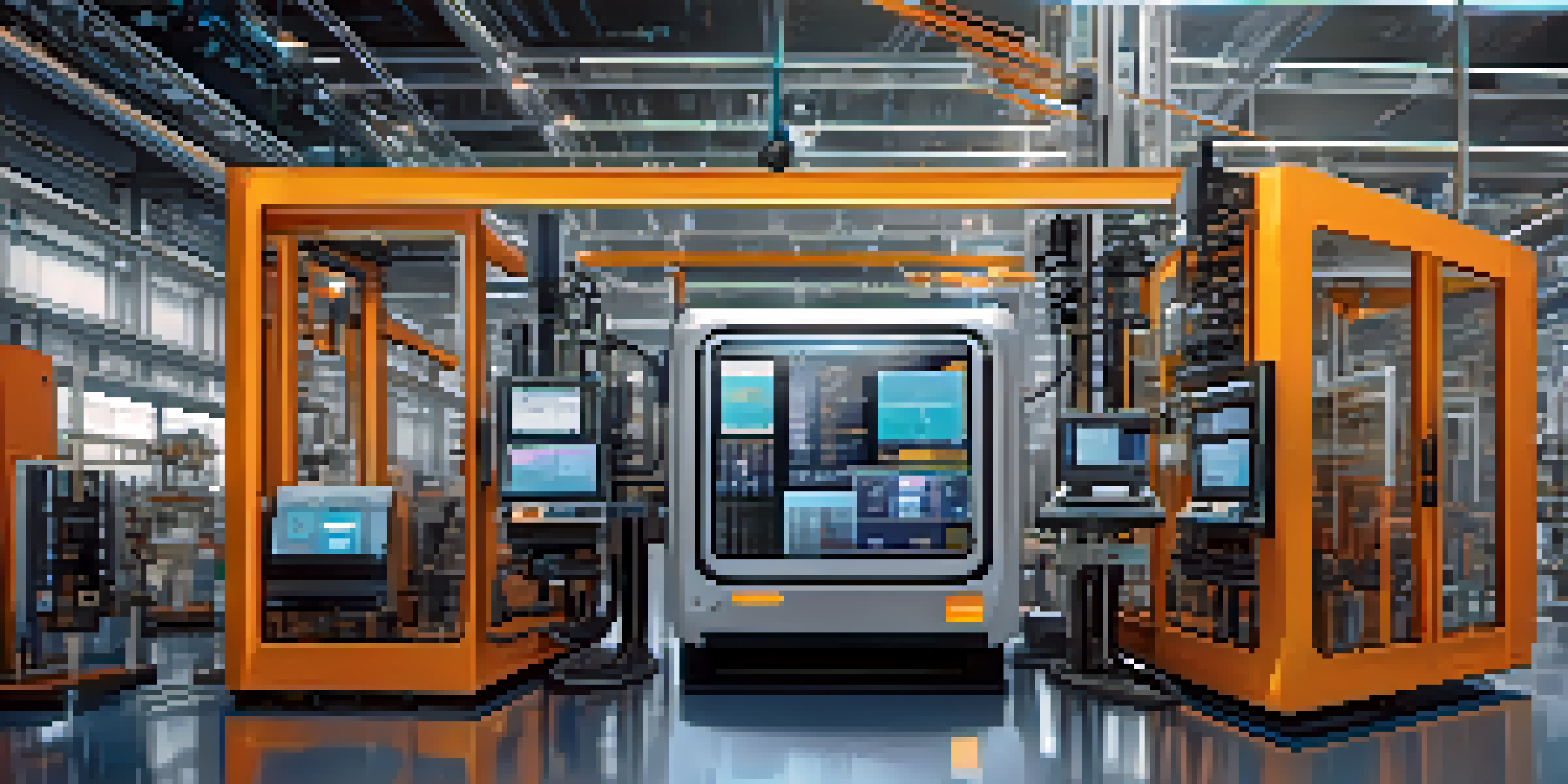Simulation Techniques in Digital Twin Development

Understanding Digital Twins: A Quick Overview
Digital twins are virtual replicas of physical systems, helping to simulate real-world conditions. They bridge the gap between the physical and digital realms, allowing for enhanced monitoring and optimization of assets. By creating a digital counterpart, organizations can analyze data in real-time, leading to informed decision-making and improved efficiency.
The digital twin is not just a model of the physical system; it’s a living, breathing entity that can evolve with the system it represents.
Imagine having a digital version of your car that can predict maintenance needs based on driving patterns. This is the essence of a digital twin. It doesn’t just mirror the physical object; it learns from it, evolving as conditions change.
In industries ranging from manufacturing to healthcare, the concept of digital twins is revolutionizing how we approach system management. As we delve deeper into simulation techniques, we'll uncover how these tools support the development of digital twins.
The Role of Simulation in Digital Twin Development
Simulation plays a critical role in digital twin development by enabling scenario testing without real-world risks. This allows companies to experiment with different operational strategies and make adjustments before implementing changes in the physical world. By providing a safe environment for experimentation, simulations help to identify potential issues early on.

Think of simulation as a flight simulator for pilots. It prepares them for various scenarios they might face during actual flights, without any of the associated dangers. Similarly, simulations help businesses foresee challenges and develop contingency plans.
Digital Twins Enhance Efficiency
Digital twins serve as virtual replicas of physical systems, enabling real-time data analysis for informed decision-making and operational optimization.
Furthermore, simulations can enhance the accuracy of digital twins by incorporating complex algorithms and data analytics. This ensures the virtual model reflects the physical object's behavior more closely, leading to better predictions and insights.
Types of Simulation Techniques in Use
There are several simulation techniques commonly used in digital twin development, each serving specific purposes. For instance, discrete event simulation focuses on modeling the operation of systems as a sequence of events, while system dynamics emphasizes the relationships between components over time. Choosing the right technique depends on the goals of the simulation and the nature of the system being modeled.
Simulation provides a safe environment to experiment and innovate without the risk of real-world consequences.
Consider a factory floor: discrete event simulation might analyze the flow of materials through the production line, while system dynamics could explore long-term trends in production efficiency. Both approaches provide valuable insights but from different perspectives.
By understanding these techniques, developers can select the most appropriate method for their digital twin, ensuring that the virtual model accurately represents real-world processes.
Integrating Machine Learning into Simulations
Machine learning (ML) enhances simulation by providing data-driven insights and enabling predictive analytics. When integrated into digital twin development, ML algorithms can analyze vast amounts of data to identify patterns and trends that may not be immediately apparent. This helps in refining the simulations and making them more responsive to real-world changes.
Imagine a smart home system that learns from your habits and optimizes energy consumption accordingly. This is similar to how ML can improve digital twins by adapting simulations based on historical data and predicted future states.
Simulation Crucial for Development
Simulation techniques allow organizations to test scenarios safely, identifying potential issues before real-world implementation.
As a result, organizations can achieve more accurate forecasts, leading to better strategic planning and resource allocation. The synergy between machine learning and simulation techniques is a game-changer in the realm of digital twin development.
Real-Time Data and Its Impact on Simulation
Incorporating real-time data into simulations enhances the accuracy and relevance of digital twins. By feeding live data from sensors and IoT devices into the simulation model, organizations can create a dynamic representation of their systems. This allows for immediate adjustments based on current conditions, improving responsiveness and decision-making.
Think of it like a weather app: the accuracy of the forecast improves significantly when it uses real-time data rather than relying solely on historical patterns. Similarly, real-time integration helps digital twins stay aligned with their physical counterparts.
This approach not only aids in monitoring performance but also in predicting potential failures, leading to proactive maintenance strategies that save time and money.
Challenges in Simulation for Digital Twins
Despite the advantages, several challenges can arise in simulating digital twins effectively. One significant hurdle is ensuring data quality; inaccurate or incomplete data can lead to misleading simulation results. Organizations must prioritize data integrity to maximize the benefits of their digital twin models.
Additionally, the complexity of the systems being modeled can pose challenges. As systems grow more interconnected and intricate, creating accurate simulations becomes increasingly difficult. This is akin to trying to piece together a jigsaw puzzle with missing pieces; the final picture may not reflect reality.
Real-Time Data Improves Accuracy
Integrating real-time data into simulations enhances the accuracy of digital twins, allowing for immediate adjustments and proactive maintenance.
Overcoming these challenges requires a strategic approach, including investing in robust data management practices and continuously refining simulation models to adapt to changing conditions.
Future Trends in Simulation for Digital Twins
As technology evolves, so do the simulation techniques used in digital twin development. Emerging trends include advances in artificial intelligence, which are likely to enhance predictive capabilities and automate aspects of simulation. This means that future digital twins could become even more intelligent and autonomous in managing systems.
Imagine a digital twin that not only simulates current operations but also autonomously suggests optimal changes based on predictive analysis. This level of sophistication would revolutionize industries, leading to unprecedented efficiency and innovation.

Moreover, the integration of augmented and virtual reality could also change how stakeholders interact with digital twins, providing immersive experiences that make complex simulations more accessible and understandable.